Tech
Understanding 11.11.11.21:5000: Network Configuration and Use Cases
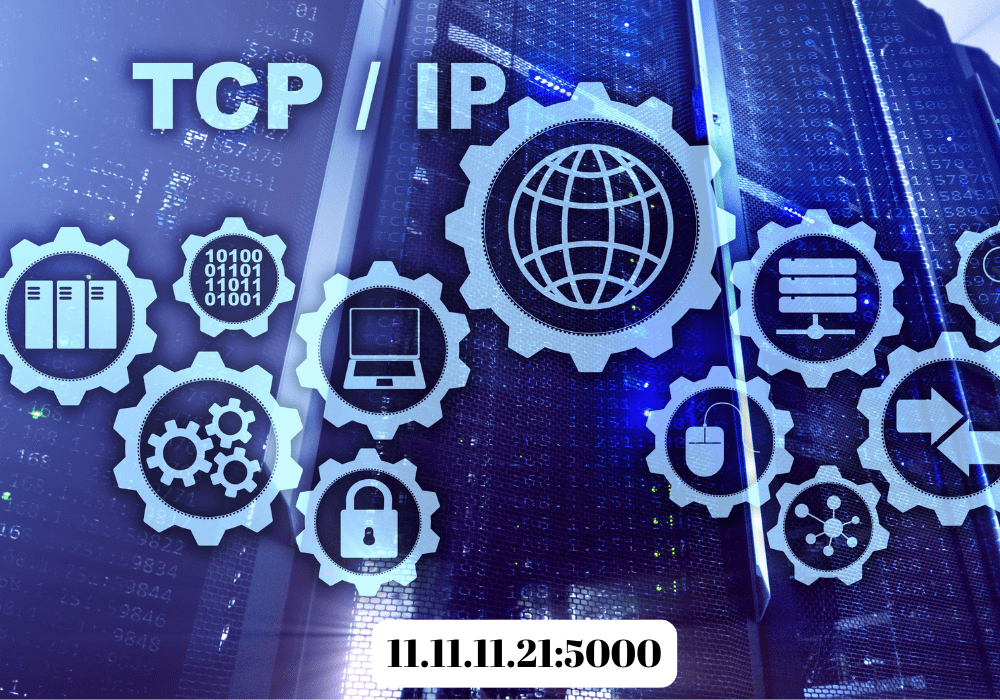
Introduction
In the world of networking, IP addresses and ports play a crucial role in facilitating communication between devices and services. One such identifier that has gained attention is 11.11.11.21:5000. This combination of IP address and port number is often discussed in various technical forums and is used in specific network configurations. But what exactly is 11.11.11.21:5000, and how is it used in networking? This article aims to provide a comprehensive guide to understanding 11.11.11.21:5000, its significance, and its applications in different scenarios.
What is 11.11.11.21:5000?
Breakdown of 11.11.11.21:5000
The string 11.11.11.21:5000 is a combination of an IP address (11.11.11.21) and a port number (5000). To fully understand its significance, let’s break down each component:
- IP Address (11.11.11.21): An IP address is a unique numerical identifier assigned to each device connected to a network. The IP address 11.11.11.21 falls within the private IP range, often used in local area networks (LANs) for internal communication.
- Port Number (5000): A port number is a communication endpoint that identifies a specific process or service on a device. In this case, 5000 is the port number associated with the service or application running on the device with the IP address 11.11.11.21.
Together, 11.11.11.21:5000 serves as a unique identifier for a specific service on a device within a network.
The Role of 11.11.11.21:5000 in Networking
In networking, 11.11.11.21:5000 is often used to direct traffic to a particular service or application hosted on a device within a network. The IP address (11.11.11.21) ensures that the data reaches the correct device, while the port number (5000) directs the data to the specific service or application running on that device. This combination is crucial in scenarios where multiple services are running on the same device, each using a different port number to differentiate between them.
Use Cases of 11.11.11.21:5000
11.11.11.21:5000 can be used in various network configurations and scenarios, including:
- Web Applications: Many web applications run on specific port numbers. For instance, a web server hosting a web application might use 11.11.11.21:5000 to make the application accessible within the network.
- Docker Containers: In containerized environments, such as Docker, services are often exposed on specific ports. 11.11.11.21:5000 could be the address used to access a containerized application running on port 5000.
- Development and Testing: Developers often use specific IP addresses and port numbers for testing purposes. 11.11.11.21:5000 might be used in a development environment to test an application before deploying it to a production environment.
- Internal Services: In a corporate network, internal services such as databases or APIs might be accessible via 11.11.11.21:5000, providing a secure and private communication channel within the organization.
Setting Up and Configuring 11.11.11.21:5000
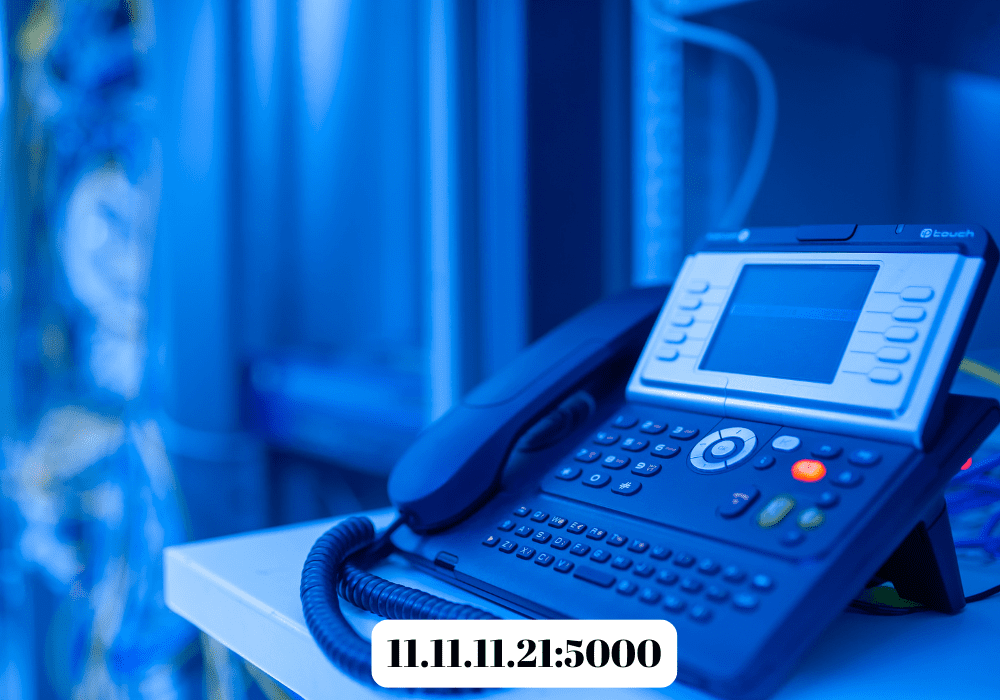
Configuring the IP Address
To set up 11.11.11.21:5000, the first step is to configure the IP address on the device. This involves assigning the IP address 11.11.11.21 to the network interface of the device. Depending on the operating system, this can be done through the network settings or via the command line.
Configuring the Service on Port 5000
Once the IP address is configured, the next step is to set up the service or application to listen on port 5000. This involves configuring the service to bind to the IP address 11.11.11.21 and the port number 5000.
Testing the Configuration
After setting up the IP address and service, it’s important to test the configuration to ensure that everything is working correctly. This can be done by accessing 11.11.11.21:5000 from a web browser or using tools like curl to send a request to the address.
Security Considerations for 11.11.11.21:5000
Restricting Access
One of the primary security considerations when using 11.11.11.21:5000 is restricting access to the service. Since the IP address 11.11.11.21 is within a private IP range, it should not be accessible from outside the local network. However, it’s still important to implement access controls to ensure that only authorized users and devices can access the service.
This can be achieved by configuring firewalls or access control lists (ACLs) to allow traffic only from specific IP addresses or subnets.
Securing the Service
In addition to restricting access, it’s important to secure the service running on port 5000. This involves implementing security best practices such as:
- Using HTTPS: If the service is accessible via a web browser, ensure that it uses HTTPS to encrypt the data transmitted between the client and the server.
- Authentication and Authorization: Implement authentication and authorization mechanisms to ensure that only authorized users can access the service.
- Regular Updates: Keep the service and the underlying operating system up to date with the latest security patches to protect against vulnerabilities.
Monitoring and Logging
Monitoring and logging are essential components of a secure network configuration. By monitoring traffic to and from 11.11.11.21:5000, you can detect any suspicious activity or potential security breaches. Logging can also provide valuable insights into how the service is being used and help identify any issues that need to be addressed.
Common Issues and Troubleshooting for 11.11.11.21:5000

Service Not Accessible
One of the most common issues encountered with 11.11.11.21:5000 is the service not being accessible.
- Incorrect IP Address or Port Number: Ensure that the IP address and port number are configured correctly and that the service is listening on the correct address.
- Firewall Blocking Traffic: Check the firewall settings to ensure that traffic to 11.11.11.21:5000 is allowed.
- Service Not Running: Verify that the service is running and has not crashed or been stopped.
Connection Timeouts
Connection timeouts can occur if there is a network issue preventing the client from reaching 11.11.11.21:5000. This could be due to:
- Network Configuration Issues: Check the network configuration to ensure that the device with IP address 11.11.11.21 is reachable from the client.
- High Network Traffic: High levels of network traffic can cause delays and timeouts. Consider implementing load balancing or optimizing the network to reduce traffic.
Slow Response Times
If the service running on 11.11.11.21:5000 is responding slowly, it could be due to:
- Resource Constraints: Ensure that the device hosting the service has sufficient resources (CPU, memory, etc.) to handle the load.
- Inefficient Code: Review the code running on the service to identify any inefficiencies or bottlenecks that could be causing slow response times.
- Network Latency: High network latency can also cause slow response times. Consider optimizing the network or using a content delivery network (CDN) to reduce latency.
Best Practices for Using 11.11.11.21:5000
Documentation
Documenting the configuration and usage of 11.11.11.21:5000 is essential for maintaining a clear understanding of how the service is set up and how it should be used. This documentation should include details on the IP address and port number, the service running on the address, and any security measures in place.
Regular Maintenance
Regular maintenance is crucial for ensuring that the service running on 11.11.11.21:5000 remains secure and performs optimally.
Regular maintenance tasks should include:
- Software Updates: Keep all software, including the operating system and the application running on port 5000, up to date with the latest patches and updates.
- Performance Monitoring: Regularly monitor the performance of the service to ensure it is running efficiently. Look for any signs of resource constraints or bottlenecks that may require optimization.
- Security Audits: Conduct regular security audits to ensure that the service is protected against potential threats. This includes reviewing access controls, monitoring logs for suspicious activity, and updating security protocols as needed.
- Backup and Recovery: Implement a robust backup and recovery plan to ensure that data can be restored in case of a failure or security breach.
Network Segmentation
To enhance security, consider using network segmentation to isolate the device running 11.11.11.21:5000 from other parts of the network. By placing the device in a separate subnet or VLAN, you can limit the potential impact of a security breach and control access more effectively.
Load Balancing
If the service running on 11.11.11.21:5000 is expected to handle a high volume of traffic, implementing load balancing can help distribute the traffic evenly across multiple servers.
Scalability Planning
As your organization grows, the demand on services like the one running on 11.11.11.21:5000 may increase. Plan for scalability by considering cloud-based solutions or additional infrastructure that can be brought online as needed to handle increased traffic and data processing requirements.
Advanced Applications of 11.11.11.21:5000
Microservices Architecture
In modern software development, microservices architecture is becoming increasingly popular. Microservices involve breaking down an application into smaller, independent services that communicate with each other over a network. Each microservice typically runs on a different port, and 11.11.11.21:5000 could be used as the endpoint for one of these services.
For example, a large e-commerce platform might use microservices to handle different parts of its system, such as user authentication, product catalog, and payment processing. One of these services could be accessed through 11.11.11.21:5000, allowing for modular development and easier scaling.
IoT (Internet of Things) Networks
In IoT networks, multiple devices communicate with each other to collect and share data. The IP address 11.11.11.21:5000 could be used in an IoT setup where a specific device, such as a sensor or gateway, is accessed via this address and port.
For example, in a smart building, various sensors might monitor temperature, humidity, and occupancy. Data from these sensors could be sent to a central server at 11.11.11.21:5000 for processing and analysis, enabling automated control of HVAC systems based on real-time data.
Virtualization and Cloud Environments
Virtualization and cloud computing have revolutionized how IT resources are managed and deployed. In a virtualized environment, multiple virtual machines (VMs) or containers might be running on a single physical server, each with its own IP address and port configuration. 11.11.11.21:5000 could be used to access a specific application or service running in one of these VMs or containers.
For instance, a company might host its internal applications on a private cloud, with each application accessible via a unique IP and port combination like 11.11.11.21:5000. This setup allows for efficient resource utilization and easy management of different services.
Remote Access and VPNs
For organizations that require remote access to their internal services, 11.11.11.21:5000 could be used in conjunction with a Virtual Private Network (VPN). The VPN allows employees to securely connect to the company’s network from remote locations, while the IP and port combination ensures that they can access the specific service they need.
For example, a remote worker might use a VPN to connect to the corporate network and access a project management tool hosted at 11.11.11.21:5000. This setup ensures secure communication while maintaining access to essential resources.
Application Development and Testing
In the software development lifecycle, testing is a critical phase where applications are rigorously evaluated before being deployed to production. Developers often use specific IP addresses and ports to isolate testing environments from production systems. 11.11.11.21:5000 could serve as the endpoint for testing an application, allowing developers to simulate real-world conditions and identify any issues before deployment.
For instance, a development team might set up a staging environment that mirrors the production environment, using 11.11.11.21:5000 as the address for the test instance of an application. This approach helps ensure that the application performs as expected in a controlled environment before it goes live.
Future Trends and Innovations
IPv6 Adoption
As the number of devices connected to the internet continues to grow, the transition from IPv4 to IPv6 is becoming increasingly important. While 11.11.11.21 is an IPv4 address, the adoption of IPv6 will introduce a new set of challenges and opportunities for network configuration. Organizations will need to adapt their network setups, including the use of IP addresses and ports, to accommodate the expanded address space provided by IPv6.
Enhanced Security Protocols
With the rise in cyber threats, security protocols for network communication are constantly evolving. In the future, we can expect to see more advanced security measures being implemented for IP addresses and ports like 11.11.11.21:5000. This could include the use of more sophisticated encryption methods, multi-factor authentication, and zero-trust security models.
AI and Machine Learning Integration
Artificial Intelligence (AI) and Machine Learning (ML) are increasingly being integrated into network management and security. These technologies can help automate the monitoring and management of network traffic to and from addresses like 11.11.11.21:5000, identifying potential threats and optimizing performance in real-time.
For example, an AI-driven network management system could automatically adjust firewall rules or load balancing configurations based on traffic patterns, ensuring optimal performance and security for services running on 11.11.11.21:5000.
Edge Computing
Edge computing is a growing trend that involves processing data closer to the source, such as on IoT devices or local servers, rather than relying solely on centralized cloud servers. In an edge computing scenario, 11.11.11.21:5000 could be used to access services running on edge devices, providing faster response times and reducing the load on central servers.
For instance, in a smart factory, edge devices might process data from sensors and send only the most critical information to a central server. The processed data could then be accessed via 11.11.11.21:5000, allowing for real-time monitoring and control of manufacturing processes.
5G and Beyond
The rollout of 5G networks is expected to revolutionize the way devices connect to the internet, providing faster speeds and lower latency. As 5G becomes more widespread, the demand for IP addresses and ports like 11.11.11.21:5000 will increase, particularly in applications that require high-speed communication, such as autonomous vehicles, smart cities, and augmented reality.
With 5G, services running on 11.11.11.21:5000 could benefit from faster data transmission and more reliable connections, enabling new and innovative use cases that were previously not possible with older network technologies.
Conclusion
In conclusion, 11.11.11.21:5000 is more than just a simple combination of an IP address and a port number; it is a vital component in the complex world of networking. From web applications and IoT networks to virtualization and remote access, this address plays a crucial role in enabling communication between devices and services within a network.
Understanding how to configure, secure, and optimize the use of 11.11.11.21:5000 is essential for anyone involved in network management or application development. As technology continues to evolve, staying informed about the latest trends and best practices will ensure that you can effectively leverage this address in your network configurations.
Whether you’re a network administrator, a developer, or a security professional, the knowledge gained from this comprehensive guide will help you make the most of 11.11.11.21:5000 in your specific use case. By following the best practices outlined in this article, you can ensure that your network remains secure, efficient, and ready to meet the challenges of the future.
FAQs About 11.11.11.21:5000
1. What is the significance of the IP address 11.11.11.21?
The IP address 11.11.11.21 is a private IP address typically used within a local network. It serves as the unique identifier for a device on the network, allowing it to communicate with other devices.
2. Why is port 5000 commonly used with 11.11.11.21?
Port 5000 is often used for development and testing purposes, particularly in web applications and containerized environments like Docker. It is a commonly chosen port for services that need to be accessed within a network.
3. How can I secure the service running on 11.11.11.21:5000?
To secure the service, implement access controls such as firewalls and VPNs, use HTTPS for encryption, and ensure that the service is regularly updated with the latest security patches.
4. Can 11.11.11.21:5000 be accessed from outside the local network?
Generally, 11.11.11.21:5000 is intended for use within a private network and should not be accessible from outside the network. To access it remotely, you would typically use a VPN or other secure remote access solution.
5. What are some common issues that can occur with 11.11.11.21:5000?
Common issues include the service not being accessible due to incorrect configuration, connection timeouts caused by network problems, and slow response times due to resource constraints or high network latency.
Tech
Is www gravityinternetnet the Best ISP for You? A 2025 Review

With everything from work to entertainment moving online, a strong internet connection has become an everyday essential.
Whether you’re working from home, streaming your favorite shows, or gaming online, the quality of your internet service can significantly impact your experience. Enter www gravityinternetnet, a rising star in the ISP world that promises to redefine how we connect online.
But with numerous ISPs available, what sets www gravityinternetnet apart? Let’s delve into its offerings and see if it lives up to the hype.
What Is www gravityinternetnet?
“www.gravityinternetnet is a modern internet provider redefining connectivity by using state-of-the-art technology to deliver fast, stable, and cost-effective internet access.” Unlike traditional ISPs that rely solely on wired connections, Gravity InternetNet combines fiber-optic, 5G, and satellite technologies to ensure seamless connectivity across urban and rural areas.
Key Features:
- High-Speed Internet: Offers speeds up to 1 Gbps, ideal for streaming, gaming, and large file downloads.
- Affordable Pricing: Transparent pricing with no hidden fees, catering to various budgets.
- Wide Coverage: Utilizes a mix of fiber-optic and satellite technologies to reach underserved areas.
- Always-on Support: Get help any time of day with responsive, around-the-clock customer service designed to resolve issues quickly.
Why Choose www gravityinternetnet?
1. Unmatched Speed and Reliability
With internet speeds reaching up to 1 Gbps, www gravityinternetnet ensures smooth streaming, lag-free gaming, and quick downloads. Their hybrid approach, combining fiber-optic and satellite technologies, guarantees consistent performance even in remote locations.
2. Transparent and Affordable Pricing
Say goodbye to hidden fees and unexpected charges. “With straightforward and budget-friendly plans, www.gravityinternetnet makes it easy to know exactly what you’re paying for, no hidden fees, just solid value.”
3. Comprehensive Coverage
Whether you’re in a bustling city or a remote village, www gravityinternetnet’s use of satellite and fiber-optic technologies ensures you stay connected. This extensive coverage makes it an excellent choice for users in underserved areas.
4. Robust Security Measures
In an era of increasing cyber threats, www gravityinternetnet prioritizes user security. The platform employs advanced encryption protocols and data protection measures to safeguard users’ personal and financial information.
5. Exceptional Customer Support
www.gravityinternetnet puts user satisfaction first, shaping its services around the needs and expectations of its customers. Their 24/7 support team is readily available to assist with any technical or billing issues, ensuring a hassle-free experience for users.

How Does www gravityinternetnet Compare to Other ISPs?
| Feature | www gravityinternetnet | Competitor A | Competitor B |
| Max Speed | 1 Gbps | 500 Mbps | 300 Mbps |
| Pricing Transparency | Yes | No | Yes |
| Rural Coverage | Extensive | Limited | Moderate |
| 24/7 Support | Yes | No | Yes |
| Security Features | Advanced Encryption | Basic | Moderate |
Note: Competitor data is illustrative.
Real User Experiences
A growing number of users have praised www.gravityinternetnet for its reliable service and user-friendly experience.
“Switching to it was the best decision. The speed is incredible, and I haven’t experienced any downtime.” – Sarah L., California
“As a remote worker, reliable internet is crucial. www gravityinternetnet has exceeded my expectations.” – James T., Texas
Conclusion
In the competitive world of internet service providers, it stands out by offering high-speed, reliable, and affordable internet solutions. With its innovative use of technology, transparent pricing, and exceptional customer support, it’s a compelling choice for users seeking a superior internet experience.
FAQs:
- What areas does www gravityinternetnet serve?
- www gravityinternetnet provides coverage across various regions, including both urban and rural areas. For specific service availability, visit their coverage page.
- Are there any data caps with www gravityinternetnet?
- No, www gravityinternetnet offers plans without data caps, ensuring unlimited browsing and streaming.
- How can I contact customer support?
- For assistance anytime, simply contact their support team via email.
- Is there a contract required?
- www gravityinternetnet offers both contract and no-contract plans, providing flexibility based on your preferences.
- What devices are compatible with their service?
- Their service is compatible with a wide range of devices, including smartphones, laptops, smart TVs, and more.
Also Read: Worty34: Everything You Need to Know About
Tech
ADE8606: A Guide to Integrated Circuit
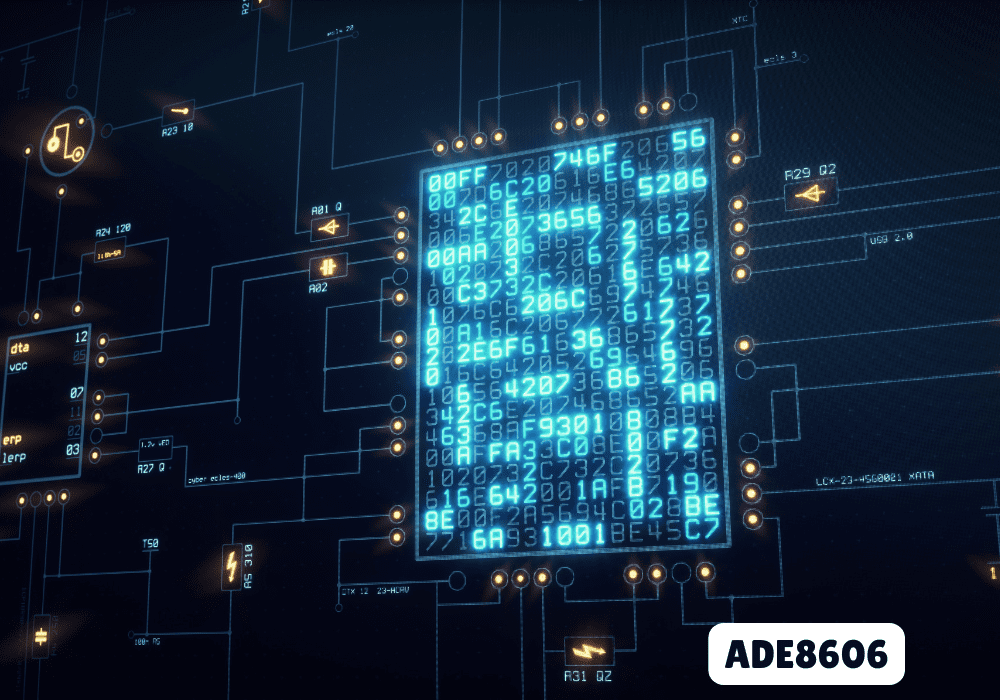
In the world of electronics and integrated circuits (ICs), the ADE8606 stands out as a highly specialized component designed for specific use cases. Whether you’re an electrical engineer, a student, or a tech enthusiast, understanding the ADE8606 can be crucial for projects requiring precision in data conversion, energy measurement, or signal processing.
This guide will take an in-depth look at what the ADE8606 is, how it functions, its applications, and why it is important in modern electronic designs. We will also cover frequently asked questions to address any lingering doubts or queries about this powerful integrated circuit.
Introduction to the ADE8606
The ADE8606 is an energy measurement integrated circuit produced by Analog Devices. This IC is designed for precise measurement and processing of electrical parameters, making it an ideal choice for applications that require high accuracy in energy monitoring. With its ability to perform various signal processing tasks, including analog-to-digital conversion, the ADE8606 is often used in smart meters and industrial applications.
What Makes the ADE8606 Stand Out?
The ADE8606 stands out due to its integrated architecture, which combines multiple functions into a single chip. It is specifically designed to handle voltage, current, and power measurements with a high level of precision, which is critical for systems that require real-time energy monitoring and billing.
How Does the ADE8606 Work?
The ADE8606 works by converting analog signals, such as voltage and current, into digital signals. These digital signals are then processed to provide accurate measurements of electrical parameters. This IC uses a variety of filters, amplifiers, and analog-to-digital converters (ADCs) to ensure that the data is both accurate and stable.
Signal Processing Capabilities
The ADE8606 processes the incoming signals through its internal digital filters to remove noise and improve signal accuracy. It also has built-in calibration routines, allowing for error correction in real-time.
Key Features of the ADE8606
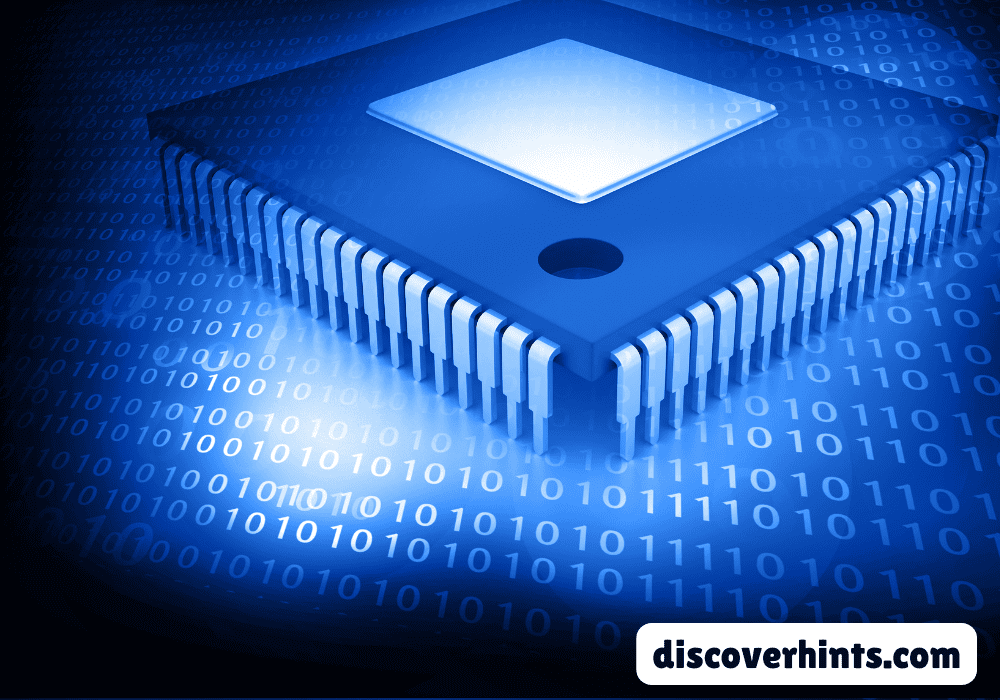
The ADE8606 offers a range of features that make it highly suitable for energy measurement and data acquisition systems.
- High-Resolution Analog-to-Digital Conversion (ADC): The IC offers a high-resolution ADC, ensuring accurate data conversion from analog to digital signals.
- Wide Dynamic Range: The ADE8606 can measure a broad range of input signals, from low to high levels, without losing accuracy.
- Low Power Consumption: Despite its advanced features, the ADE8606 is designed to be power efficient, which is crucial for applications that operate continuously.
- Calibration Support: The IC provides on-chip calibration, which improves the accuracy of measurements over time.
- Robust Signal Filtering: The ADE8606 includes robust digital filters that eliminate noise and interference from the input signals.
Applications of the ADE8606
The ADE8606 finds use in various applications where precise energy measurement and data processing are necessary.
- Smart Meters: The ADE8606 is widely used in smart meters to measure electricity consumption accurately and in real-time.
- Industrial Energy Monitoring Systems: Factories and large industrial setups often rely on the ADE8606 for tracking energy usage and improving energy efficiency.
- Renewable Energy Systems: Solar and wind power systems use the ADE8606 to monitor energy production and ensure optimal performance.
- Data Acquisition Systems: In systems that collect and process large amounts of data from sensors, the ADE8606 provides accurate conversion of sensor data into usable information.
Understanding the Functional Block Diagram of the ADE8606
The functional block diagram of the ADE8606 helps in understanding how this IC operates. It typically includes the following main components:
- Analog Front-End (AFE): The AFE conditions the input signals (voltage and current) and prepares them for digital conversion.
- Analog-to-Digital Converters (ADCs): These converters transform the analog signals into digital data that can be processed by the system.
- Digital Signal Processor (DSP): The DSP processes the digital signals to extract accurate measurements and apply filters.
- Calibration and Error Correction Unit: This unit automatically adjusts the measurements to correct any drift or errors.
Understanding the block diagram is critical for engineers when designing circuits that include the ADE8606, as it outlines the IC’s internal functionality and signal flow.
How to Use the ADE8606 in Circuit Design
Designing a circuit that incorporates the ADE8606 requires attention to detail to ensure accurate performance. Here are the steps to successfully implement the ADE8606 in your circuit design:
- Step 1: Define Your Application Needs: Begin by identifying the electrical parameters you need to measure, such as voltage, current, and power.
- Step 2: Set Up Power Supply: Ensure that the power supply to the ADE8606 is stable and within the recommended voltage range.
- Step 3: Configure Input Signal Conditioning: Use appropriate resistors and capacitors to condition the input signals before feeding them into the ADE8606.
- Step 4: Implement Proper Grounding: Grounding is critical to reduce noise and interference in the measurement signals.
- Step 5: Program Calibration: Use the ADE8606’s on-chip calibration features to fine-tune the accuracy of your measurements.
Comparison Between ADE8606 and Other Similar ICs
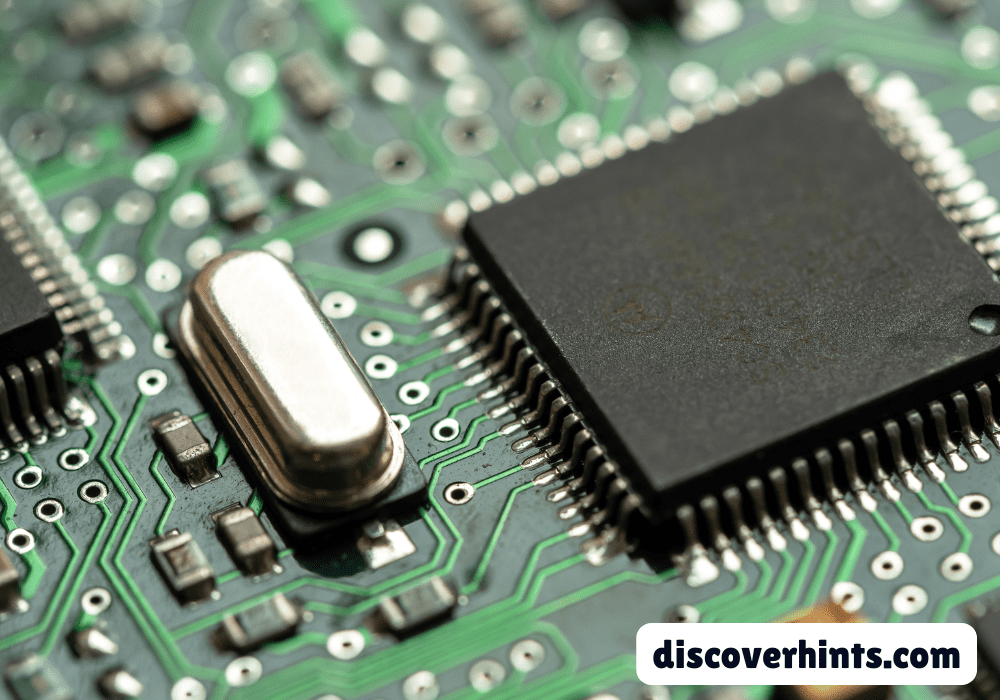
When comparing the ADE8606 to other ICs used for energy measurement, such as the ADE7758 and the MCP3909, it’s essential to consider the following factors:
- Accuracy: The ADE8606 offers higher precision due to its advanced calibration and filtering features.
- Power Consumption: The ADE8606 is more energy-efficient, making it ideal for long-term applications like smart meters.
- Dynamic Range: While some ICs might perform well at specific ranges, the ADE8606 has a broader dynamic range, making it more versatile.
- Ease of Use: The ADE8606 is designed for ease of implementation, with built-in features that reduce the complexity of circuit design.
Why Choose the ADE8606 for Energy Measurement?
The ADE8606 is specifically engineered for energy measurement, offering exceptional accuracy and reliability. Here’s why it stands out for such applications:
- High Precision: Its high-resolution ADCs and filtering techniques ensure that energy measurements are highly accurate, which is critical for billing purposes.
- Low Power Operation: For devices that need to operate 24/7, such as smart meters, low power consumption is a major benefit.
- Real-Time Data Processing: The ADE8606 processes energy data in real-time, making it ideal for applications that require immediate feedback.
The Role of ADE8606 in Data Conversion
The ADE8606 plays a vital role in converting analog signals from electrical systems into digital data. Its high-resolution ADCs allow for precise measurement, and its digital filters remove noise to ensure the accuracy of the converted data.
This conversion capability is essential in modern electronics, where real-time data monitoring and energy efficiency are priorities.
Power Efficiency of the ADE8606
One of the standout features of the ADE8606 is its power efficiency. Designed to consume minimal power while still delivering high performance, it is ideal for use in systems that need to run continuously without frequent maintenance or battery changes.
Common Challenges When Using the ADE8606
While the ADE8606 is a powerful IC, users may encounter several challenges, including:
- Signal Noise: In environments with high levels of electromagnetic interference, signal noise can affect the accuracy of the measurements.
- Calibration Complexity: Setting up the calibration routines correctly can be time-consuming for those unfamiliar with the process.
- Power Supply Stability: An unstable power supply can lead to inaccurate measurements or malfunction of the IC.
Best Practices for Implementing ADE8606 in Projects
To get the best results from the ADE8606, follow these best practices:
- Proper Grounding: Always ensure that your circuit is grounded correctly to minimize noise.
- Stable Power Supply: Use a regulated power supply to prevent voltage fluctuations.
- Shielding: In high-noise environments, consider shielding your circuit to protect against electromagnetic interference.
How to Source the ADE8606
Finding a reliable source for the ADE8606 can be challenging due to its specialized nature. Some of the most reliable places to purchase this IC include:
- Authorized Distributors: Companies like Digi-Key and Mouser Electronics offer genuine ADE8606 ICs.
- Direct from Manufacturer: Purchasing directly from Analog Devices ensures that you receive the most up-to-date version of the IC.
Future Trends and Developments in ICs like the ADE8606
As technology continues to evolve, ICs like the ADE8606 will become even more advanced. Future trends include:
- Increased Integration: More functionality will be built into a single IC, reducing the need for multiple components.
- Lower Power Consumption: Expect even lower power requirements as efficiency becomes a growing concern.
- Enhanced Accuracy: Advances in ADC technology will lead to even more precise measurements.
Frequently Asked Questions (FAQs) About the ADE8606
1. What is the ADE8606 used for?
The ADE8606 is primarily used for accurate energy measurement in applications like smart meters, industrial energy monitors, and renewable energy systems.
2. How accurate is the ADE8606?
The ADE8606 is highly accurate due to its high-resolution ADCs and built-in calibration routines. It can measure electrical parameters with precision even in noisy environments.
3. Can the ADE8606 be used in renewable energy systems?
Yes, the ADE8606 is commonly used in renewable energy systems to monitor energy production and ensure that power is being efficiently managed.
4. How do I calibrate the ADE8606?
The ADE8606 has on-chip calibration features, which can be programmed to adjust the IC for accurate measurements over time.
5. Where can I buy the ADE8606?
The ADE8606 can be purchased from authorized distributors like Digi-Key, Mouser Electronics, and directly from Analog Devices.
Conclusion
The ADE8606 is a highly specialized integrated circuit designed for precise energy measurement and signal processing. With its advanced features, it is the go-to solution for smart meters, industrial applications, and renewable energy systems. By understanding its capabilities, applications, and best practices, you can make the most of this powerful IC in your projects.
Tech
Understanding 11.11.11.21:5000 – Networking and Port Management

In the world of computer networking, IP addresses and port numbers play a critical role in facilitating communication between devices. One specific combination that has sparked curiosity and importance in recent times is 11.11.11.21:5000. While this may seem like a random sequence of numbers, it actually represents a crucial part of network management and system configuration. In this detailed guide, we will dive into the significance of 11.11.11.21:5000, explain its meaning, use cases, and how it fits into the broader context of networking, including its role in server management, firewalls, and troubleshooting.
What is 11.11.11.21:5000?
The string 11.11.11.21:5000 consists of two main components: an IP address (11.11.11.21) and a port number (:5000). In networking terms, an IP address uniquely identifies a device on a network, while the port number serves as a virtual point where network communications start and end. When combined, 11.11.11.21:5000 refers to a specific communication endpoint on a server or system.
This endpoint can be used for a variety of purposes, such as hosting a web application, communicating with APIs, or accessing databases. While the IP address specifies the location of the device, the port number determines which application or service on that device is being accessed.
Understanding IP Address 11.11.11.21
Private vs. Public IP Addresses
In networking, there are two types of IP addresses: public and private. Public IP addresses are used on the open internet, allowing communication between devices across the globe. Private IP addresses, on the other hand, are used within local networks and cannot be accessed from outside without proper routing and port forwarding.
Is 11.11.11.21 a Private or Public IP?
The IP address 11.11.11.21 falls under the public IP address range. However, it is not a commonly used public IP for consumer-facing services. Instead, it may be used in controlled environments like corporate networks, testing servers, or internal systems that require a specific configuration.
What Does :5000 Represent?
Port Numbers and Their Role in Networking
Port numbers are essential to differentiate between various services running on the same IP address. Every service or application that needs to communicate over a network is assigned a port number. Port numbers range from 0 to 65535, with specific ranges reserved for common services (e.g., port 80 for HTTP and port 443 for HTTPS).
Common Uses of Port 5000
Port 5000 is often associated with certain development environments, especially in web development. In many cases, developers use port 5000 to test applications locally before deploying them to production servers. This port is also used by certain database systems and web frameworks like Flask (a Python web framework) for testing purposes.
How 11.11.11.21:5000 is Used in Web Development
Localhost and Port Forwarding
In web development, developers frequently work with local servers on their machines using IP addresses like 127.0.0.1 (localhost). However, when developing in a networked environment, they might use 11.11.11.21:5000 for testing or accessing applications from other devices within the same network. Port forwarding may be used to route external traffic to a specific port, allowing access to services running locally.
Testing Web Applications
Developers commonly utilize port 5000 during the testing phase of web applications. For instance, frameworks like Flask and Django bind to port 5000 when running in development mode, enabling developers to access the application through the browser using 11.11.11.21:5000.
Server Management and 11.11.11.21:5000
Setting Up Servers with IP
In server management, configuring an IP address with a port number is standard practice. For example, a web server might run on 11.11.11.21:5000, meaning that the server can be accessed via this specific endpoint. This configuration is essential for organizing traffic and managing multiple services on the same machine.
Monitoring Traffic on Port 5000
Administrators can monitor traffic flowing through port 5000 using various network monitoring tools. By doing so, they can ensure that the service running on that port is healthy, track performance, and identify any potential security risks.
Security Considerations for 11.11.11.21:5000
Firewall Configuration
One of the key security measures for managing 11.11.11.21:5000 is properly configuring firewalls. Firewalls can be set up to allow or deny traffic to this specific port based on the organization’s security policies. Misconfigurations, however, can lead to vulnerabilities and expose sensitive services to unauthorized access.
Potential Vulnerabilities and Mitigations
Ports are frequent targets of attackers looking for open points to exploit. Port 5000, being commonly used in development, may be exposed if not properly secured. Employing strategies like whitelisting IP addresses, using strong authentication mechanisms, and enabling encryption can mitigate these risks.
Networking Tools to Troubleshoot 11.11.11.21:5000
Ping, Traceroute, and Port Scanning
When troubleshooting connectivity issues with 11.11.11.21:5000, network administrators often use tools like Ping to check the availability of the IP address, Traceroute to map the path between the local machine and the destination, and Port Scanning to verify whether port 5000 is open and accepting connections.
8. How to Access 11.11.11.21:5000
Remote Access Techniques
To remotely access 11.11.11.21:5000, one must configure the network appropriately. This often involves setting up secure tunnels (like SSH) or VPNs to connect to the network hosting the server. Proper authentication is also critical to prevent unauthorized access.
Configuring Browser and Software
For web-based applications, accessing 11.11.11.21:5000 typically involves entering the IP address and port into a web browser. For API services or database connections, custom software or scripts may need to be configured to direct traffic to this specific IP
Use Cases for 11.11.11.21:5000 in Real-World Scenarios
Web Servers
In some web hosting scenarios, 11.11.11.21:5000 might be assigned to a specific service or sub-application. For example, the main site might run on port 80, while a secondary service (like an API) operates on port 5000.
API Communication
API developers may use 11.11.11.21:5000 to test or run backend services that interface with front-end applications. This ensures that different microservices within the same network can communicate effectively without port conflicts.
Database Access
Some database management systems use port 5000 to allow connections from client applications. 11.11.11.21:5000 could represent a database endpoint where users query data, manage tables, or perform administrative tasks.
Best Practices for Managing Ports Like 5000
Ensuring Optimal Network Performance
When managing ports like 5000, it’s essential to periodically review network performance and ensure that traffic is flowing smoothly. Load balancing, traffic segmentation, and proper bandwidth allocation are key considerations for network administrators.
Avoiding Common Mistakes
A common mistake is leaving unnecessary ports open or misconfiguring firewalls, leaving services exposed to potential attacks. Regular audits of open ports and security configurations are necessary to prevent such issues.
Common Issues Encountered with 11.11.11.21:5000
Connection Refused Errors
One of the most common errors encountered with 11.11.11.21:5000 is a “Connection Refused” message. This may happen if the service running on port 5000 is down, misconfigured, or blocked by a firewall.
Misconfiguration Problems
Misconfiguring IP addresses or ports can lead to downtime and connectivity issues. It’s crucial to verify network settings, ensure that services are bound to the correct IP
combination, and troubleshoot using network tools when issues arise.
How to Secure 11.11.11.21:5000 in a Production Environment
Enabling Encryption
When using 11.11.11.21:5000 for sensitive services, it’s critical to encrypt the data being transmitted. SSL/TLS certificates can be installed to secure communication between clients and servers, ensuring that data is not intercepted during transmission.
Using Strong Authentication Methods
To prevent unauthorized access to 11.11.11.21:5000, implementing strong authentication mechanisms is essential. This includes using complex passwords, enabling two-factor authentication (2FA), and employing role-based access control (RBAC).
Case Study: Real-Life Application of 11.11.11.21:5000
In a real-world scenario, 11.11.11.21:5000 might be used for a web application that handles internal employee data. A company could deploy a Flask-based dashboard on port 5000, allowing employees to log in, view performance data, and access reports. The security team would configure firewalls to restrict access to authorized IP addresses and secure the endpoint with SSL encryption.
Difference Between 11.11.11.21:5000 and Other IP Configurations
Comparing Different Port Numbers
While port 5000 is often used for development purposes, other ports serve different functions. For instance, port 80 is used for HTTP traffic, and port 22 is used for SSH. Each port has its own set of protocols and best practices depending on its application.
Advantages and Disadvantages
Using 11.11.11.21:5000 for development environments offers flexibility and ease of use, but it may require additional security measures in production to prevent unauthorized access and potential breaches.
Future Trends in Networking and the Role of Port Management
As network infrastructures evolve, the role of IP
configurations like 11.11.11.21:5000 will continue to be crucial. With the rise of containerization and microservices, managing individual service endpoints using unique ports will become even more critical. New tools and techniques for better securing and monitoring ports will emerge as the need for more efficient, scalable networking solutions grows.
Frequently Asked Questions (FAQs)
1. What is the significance of 11.11.11.21:5000?
11.11.11.21:5000 represents a specific endpoint in networking, where the IP address (11.11.11.21) designates the device, and the port number (5000) identifies the service or application being accessed.
2. How do I access 11.11.11.21:5000 from my browser?
To access 11.11.11.21:5000, you would type “http://11.11.11.21:5000” into your web browser. Ensure the server is running and accepting connections on port 5000.
3. Is 11.11.11.21:5000 secure for web applications?
While 11.11.11.21:5000 can be used in web applications, it’s essential to implement security measures like encryption (SSL/TLS) and proper firewall configurations to protect the endpoint.
4. Can I change the port number from 5000 to something else?
Yes, the port number can be changed if necessary. However, the service must be configured to listen on the new port, and the firewall settings need to be updated accordingly.
5. Why might I encounter “Connection Refused” on 11.11.11.21:5000?
This error typically occurs when the service running on port 5000 is down or misconfigured, or if the firewall is blocking the connection.
-

 Blog9 months ago
Blog9 months agoOkiha18 Convenience Store Things: A Comprehensive Guide
-

 Automotive9 months ago
Automotive9 months agoGorilla Kustoms: Pioneering Vehicle Personalization in Gosford, New South Wales
-

 Real Estate7 months ago
Real Estate7 months agoWhat Are the Benefits of Regular Pressure Washing for Seattle Commercial Properties?
-
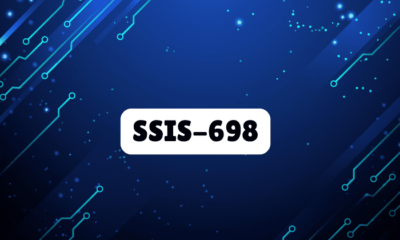
 Tech10 months ago
Tech10 months agoSSIS-698: Why This Unique Code Is Important
-

 Lifestyle12 months ago
Lifestyle12 months agoHow Old is Lil Meech? Age, Height, Family & More
-
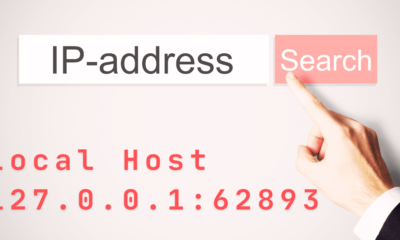
 Tech12 months ago
Tech12 months ago127.0.0.1:62893: Common Uses and Best Practices
-

 Biography11 months ago
Biography11 months agoAll About Kristy Greenberg Wikipedia : Biography and More
-

 Entertainment11 months ago
Entertainment11 months agoDiving Deep into Nhentai 455058: Themes, Origins, and User Reception




